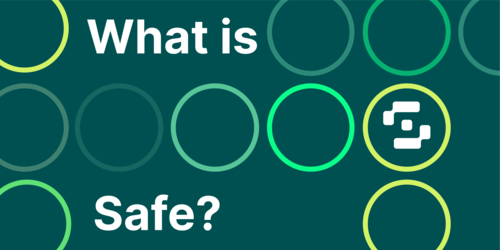Gnosis Safe (now renamed “Safe”) provides an easy way to manage multi-signature wallets. As with most things on Ethereum, while it is technically possible to write the code yourself, almost everyone uses a service provider. Safe makes a speciality of multi-signature good contract wallets that not solely store funds but conjointly modify functions to be run on those funds. Multiple signature necessities may engage organizations seeking protection against the misappropriation of funds in a single signature wallet. Ethereum Virtual Machine (EVM) can work with most major EVM-compatible wallets, including ERC-20 and ERC-721 NFT tokens.
It runs on the Arbitum, Aurora, Binance (BNB) sensible Chain, intuition Chain, and plane figure blockchains. Immense names exploitation intuition Safe embrace ConsenSys, Aave, SushiSwap, and Ethereum Name Service (ENS).
His Twitter account says the organization is migrating to a new domain due to rebranding. Still, other moves include migrations from transaction services to Gnosis Chain on Oct twenty and Ethereum main net on October 24. intuition Safe is one of the many consolidative forces in Ethereum. Since Ethereum transitioned to a Proof-of-Stake (PoS) algorithmic rule with its merger, considerations concerning centralization have increased. Even before the merger, most users interacted with Ethereum through a managed API, Infura, using a key manager, Metamask. Refers to a block explorer, Etherscan. Going beyond the centralization of the technology stack, PoS staking services now centralize the management of ETH itself. And Lido controls the private keys of most ETH with liquid participation.
Gnosis Safe became one of the organizations contributing to the increasing centralization of Ethereum with its vast market share in managing multi-signature wallets. The largest liquid staking service, Lido, uses Gnosis Safe. Lido offers an APR denominated in 5.4% ETH for investors who don’t have the 32 ETH required to become their validator. Lido currently controls $5.7 billion in ETH with liquid holdings, dwarfing its peers. Its closest competitor, RocketPool, has just $550 million. Next, StakeWise has less than $100 million. Should the rogue admins of Coinbase, Kraken, and Binance ever work with Lido, these four keyholders could sign for more than half of the total Ethereum stake.
Ethereum users can expect no one to stop them from downloading a wallet using the seemingly decentralized Ethereum blockchain. If a wallet is censored, they may try to download one wallet from another. However, MetaMask showed that this is not the case. Secure. Many crypto-enabled websites only connect to Metamask and do not support third-party software wallets. Metamask blocked users from Venezuela and Iran from using their wallets, indicating that a centralized party controls decisions for their software.
OpenSea also blocked Iranian users, shaking decentralization beliefs in the NFT industry. Gnosis Safe’s monopoly on multi-signature smart contracts became one of several centralizing factors in Ethereum. Safe provides valuable security for organizations concerned about the potential theft of digital data. Active. Safes are perhaps more secure than single-signature wallets. However, Safe also promotes the centralization of Ethereum.


